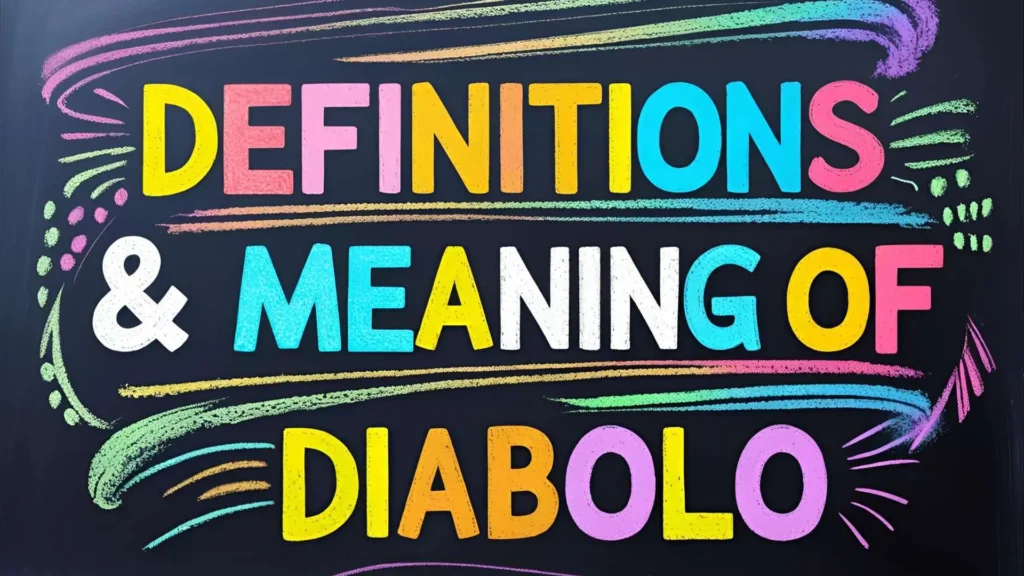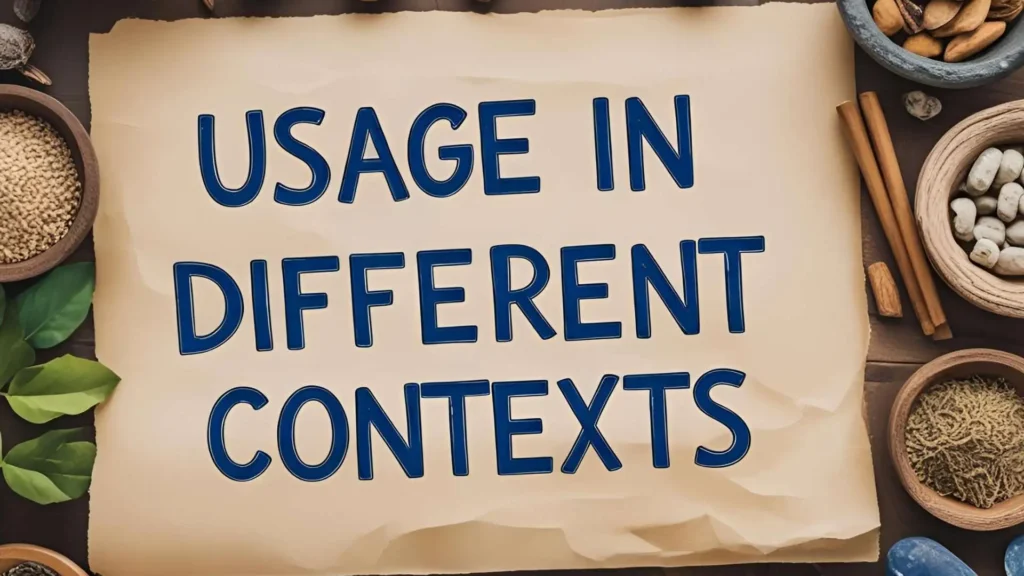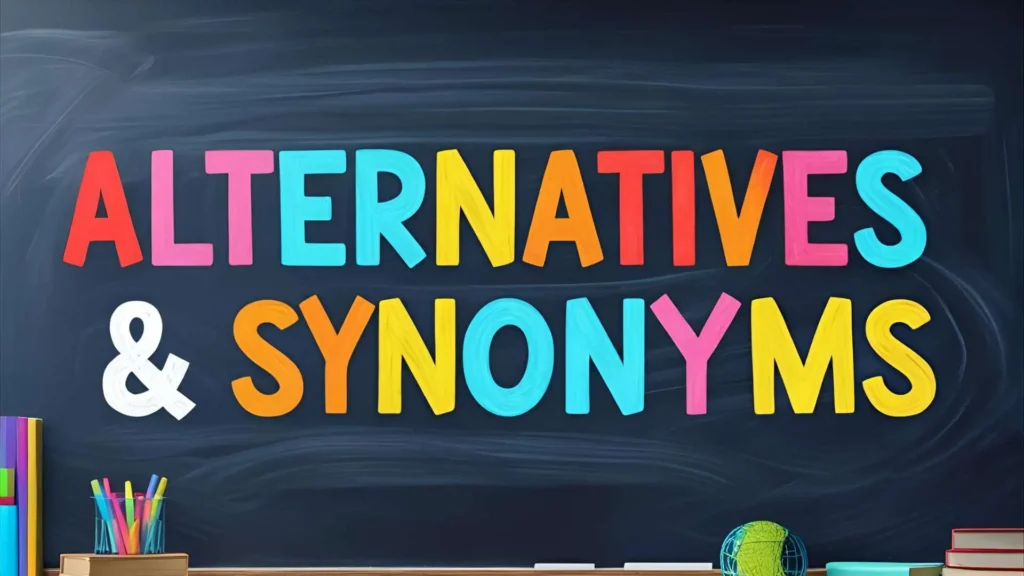The word “diabolo” sparks curiosity wherever it appears.
Some people know it as a circus juggling toy, others as a refreshing French café drink, and a few connect it with its ancient origins.
Far from being a single definition, diabolo carries multiple cultural meanings that stretch across time and geography.
Understanding diabolo meaning gives us a glimpse into how words evolve—from ancient Chinese street toys to European circus performances, from playful soda drinks to hashtags trending on social media.
This word is more than a quirky term; it represents creativity, tradition, and playfulness.
In this article, we’ll explore diabolo’s definitions, origins, cultural uses, misconceptions, synonyms, and FAQs.
By the end, you’ll know exactly why this word has stood the test of time and why it still matters in modern culture.
Definitions & Meaning

The term “diabolo” has more than one definition:
- Circus Toy (Most Common): A juggling prop made of a spool balanced on a string tied to two sticks. Performers toss, spin, and catch the diabolo to create dazzling tricks. Example: “She wowed the crowd with her diabolo performance.”
- French Drink: In France, a diabolo is a non-alcoholic soda mixed with flavored syrup, such as mint (diabolo menthe), grenadine (diabolo grenadine), or lemon. Example: “At the café, he ordered a diabolo menthe.”
- Etymology: Derived from the Greek diaballein meaning “to throw across,” perfectly describing the motion of the juggling diabolo.
- Pop Culture Use: Sometimes used in branding or entertainment to symbolize energy, skill, or youthfulness.
Thus, diabolo meaning changes with context—toy, drink, or cultural symbol.
Origins & History
The diabolo toy traces its roots back over 4,000 years to ancient China, where it began as the “Chinese yo-yo.” These early versions were made of bamboo, producing a humming sound as they spun.
By the 18th century, diabolo reached Europe and quickly became a pastime among both children and adults. In France and Britain, diabolo gained popularity during the 19th century, evolving into a sophisticated circus prop. Performers refined its design, introducing rubber spools and string sticks for better tricks.
At the same time, in France, the term “diabolo” took on a new life as a soda-based beverage. Likely inspired by the energetic toy, cafés began serving these colorful drinks to younger customers.
Linguistically, the Greek root diaballein (“to throw across”) ties both meanings together—whether tossing a spool into the air or tossing flavors into a fizzy drink.
Usage in Different Contexts

🎪 Circus & Performance
The diabolo is a signature prop in circus shows and juggling competitions. Performers incorporate multiple diabolos, glowing LED versions, or even fire-spinning diabolo acts. Professional jugglers often dedicate years to mastering advanced tricks.
📱 Social Media
Platforms like TikTok, Instagram, and YouTube have revived interest in diabolo. Hashtags such as #diabolo and #diabolotricks showcase tutorials, challenges, and jaw-dropping performances. Viral videos often feature young jugglers demonstrating creativity with this timeless toy.
🍹 French Café Culture
In France, ordering a diabolo is like reliving childhood. Popular versions include diabolo menthe (mint syrup + lemonade), diabolo grenadine (grenadine + soda), and diabolo citron (lemon syrup + soda). These colorful, fizzy drinks are a nostalgic part of French café menus.
🎬 Pop Culture & Symbolism
Diabolo occasionally appears in films, literature, or advertising as a symbol of balance, rhythm, or energy. The drink, meanwhile, often represents youth and lighthearted fun.
Common Misunderstandings & Clarifications
Because diabolo has several meanings, it is often misunderstood:
- Not “Diablo” (Devil): While “diablo” means devil in Spanish, diabolo is unrelated—it’s playful, not sinister.
- Not Just for Kids: Though children use it as a toy, professional jugglers perform complex tricks with diabolo on international stages.
- Not Always a Drink: In France, diabolo is a soda. In English-speaking circus contexts, it almost always refers to the juggling prop.
- Not a Yo-Yo: The diabolo is free-rolling on a string, while the yo-yo is attached directly to one.
Alternatives & Synonyms

Depending on context, here are alternatives for diabolo:
| Context | Alternatives |
| Toy | Chinese Yo-Yo, Circus Diabolo, Spool Juggling Prop |
| Drink | Flavored Soda, Syrup Soda, Mocktail |
| Expression/Style | Trick Device, Entertainment Prop, Plaything |
Frequently Asked Questions (FAQ)
Q1: What is the diabolo toy used for?
It’s used in juggling and circus acts to perform tricks by spinning and tossing a spool on a string.
Q2: Is the diabolo toy hard to learn?
Beginners can learn simple tricks quickly, but advanced performances require years of practice and coordination.
Q3: What is a French diabolo drink?
A non-alcoholic café beverage made with soda and flavored syrup such as mint or grenadine.
Q4: Is diabolo the same as a yo-yo?
No, a yo-yo is attached to its string, while the diabolo rolls freely along a string stretched between two sticks.
Q5: Why is it called diabolo?
From Greek diaballein—“to throw across”—reflecting the toy’s tossing motion.
Q6: Can you compete with diabolo?
Yes, international juggling festivals and competitions feature diabolo acts.
Q7: Is a French diabolo alcoholic?
No, it’s always a non-alcoholic soda drink, making it popular among young people.
Conclusion
The word diabolo is more than a quirky term—it is a window into history and culture. From its beginnings as an ancient Chinese toy, to its reinvention as a European circus prop, to its fun role as a French soda drink, diabolo embodies playfulness, skill, and creativity.
Understanding diabolo meaning clears away confusion with “diablo” and reveals its diverse cultural uses. Whether you see it on a café menu, at a circus performance, or trending on TikTok, diabolo connects the past with the present in a playful, energetic way.
Next time you hear the word, you’ll know it isn’t just a toy or a drink—it’s a symbol of balance, entertainment, and tradition.


